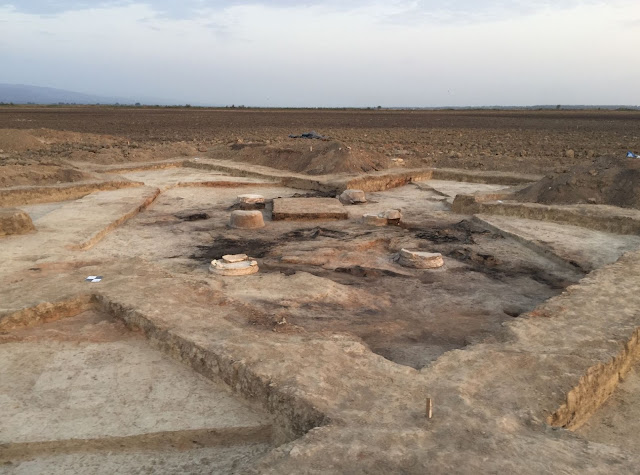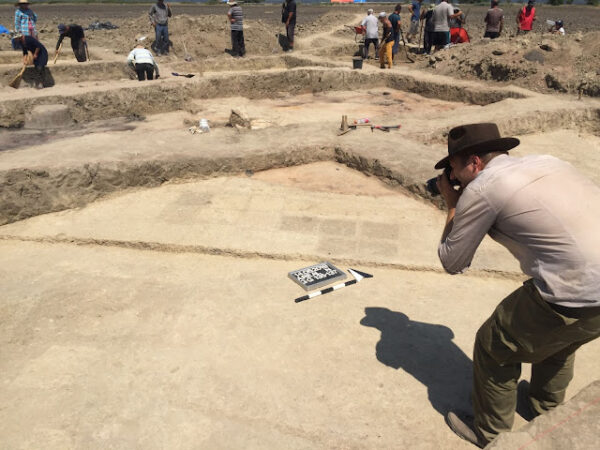2500-Year-Old Persian Palace Discovered In Eastern Georgia
An international archaeological expedition of Georgian National Museum has been working on the Alazani Valley, in the village of Jugaani, Signagi Municipality. Archaeological excavations revealed the palace remains dating to about the 5th-4th centuries BC.
The archaeological division of the Georgian National Museum, as a result of geophysical exploration on about one hectare, found remains on the Alazani Valley that had been presumably burned.
Archaeological excavation revealed a complex planning structure – the central six-column hall of the palace.

The 1.5 metres thick walls are built of mud brick. Wooden columns of the hall stood on limestone, bell-shaped bases.
There have also revealed square podiums built of mud bricks, where a throne or altar may have stood.
The bell-shaped bases, as well as the architectural elements discovered on the same site – presumably part of the decor of the column capitals – suggests that the building is from the Achaemenid era and dates back to the 5th-4th centuries BC.

It is known that the bell-shaped bases were developed at the beginning of the 5th century BC in the centres of the Persian Empire of the Achaemenids – in Sousa and Persepolis and the lotus ornament is also typical of Achaemenid art.
A domed structure, located about two kilometres from the newly discovered building, also dates to the 5th century BC. This structure was excavated in 1994-1995 and is on display at the Georgian National Museum at Signagi.

The remains of the newly discovered palace lie some forty centimetres from the surface of the ground and have been heavily damaged by ploughing.
The bell-shaped bases seem to have been damaged by fire and only at the bottom of some bases remain.
The head of the Georgian-German International Archaeological Expedition from the German side is Dr. Kai Kanyut (from the University of Munich Ludwig Maximilian) and Iulon Gagoshidze from the Georgian side (scientific consultant of Georgian National Museum).

The expedition involved a team of German geophysicists led by Jorg Fassbinder; Students from Ivane Javakhishvili Tbilisi State University and Munich University students participated in the excavation.
